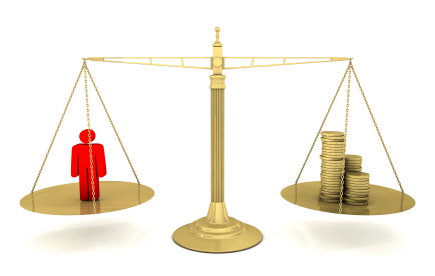When you want to innovate responsibly, safety is an important value to take into account. However, it has a cost as well as a benefit. Therefore, it is a good idea to perform economic evaluation of safety aspects related to new technology. This in order to see whether an investment to improve safety is worth its costs.
Such an evaluation is called a cost-benefit analysis or in short CBA. In such an analysis all costs and benefits are expressed in the same unit. Most of the times this unit is money. A CBA adds information on the costs and benefits of an investment, it helps the decision maker to improve the decision.
In this article, the focus will be on evaluating safety investments, but a CBA can be done on many other issues as well.
Safety investments are done to avoid unwanted events from happening, there are three different main types of unwanted events:
- Type 1: occupational accidents, e.g. resulting in inability to work for several days or requiring first aid.
- Type 2: major accidents, e.g. multiple fatality accidents (multiple people are killed), accidents with huge economic costs. Surrounded with more uncertainty.
- Type 3: Black swans. These events very rare, no information whatsoever is available è economic analysis is not possible. The consequences cannot be foreseen.
Type 1 and type 2 economic considerations are somewhat different, type 2 can have disproportion factor. But I will come back to that at the end of this presentation.
Doing a safety investment, means that you allocate money or time to a project in the present that will result in hypothetical benefits in the future. We can calculate the Net Present Value in order to guide the investment decision and to make this in an objective way. But the NPV does not take into account for example the social aspect, so it cannot be used to adopt a position in favour or against the investment. To do an NPV calculation there are 3 steps:
- Identification of costs and benefits: these are the CFs in the NPV formula where costs are negative CFs and benefits are positive CFs.
- Calculation of the present values of all costs and benefits: We need to convert all costs and benefits in the future, the cash flows, to values in the present. Discount rate, r, is the rate at which we are willing to give up consumption in the present in exchange for additional consumption in the future. Higher discount rate means lower present value of future cash flows.
- Comparison of the Present Values of total costs and total benefits – determining the NPV: An investment project is recommended when the total NPV of all cash flows over the whole time period T is positive à benefits are larger than costs of safety investment. NPV of a safety investment is the difference between the total discounted present value of the benefits and that of the costs. A positive NPV means that benefits of safety investment are higher than costs.
When we do a safety investment, costs of safety measures or prevention are associated with it. Some of these costs, like initial costs and installation costs, do not have to be discounted because they only happen once at the start of the investment (t=0). Other costs, like maintenance costs and operating costs, have to be made several times over the lifespan of the investment and thus they have to be discounted.
On the other hand, there are the costs of accidents or ‘hypothetical benefits of the safety investment’. These are the costs you would have had if the accidents were not avoided through the safety investments. Looking at smart universities, you could implement a system which registers who is in the chemical lab at a certain time and what chemicals that person uses. This might prevent a chemical explosion from occurring since as soon as the person takes two chemicals that would explode together, the person can be warned. The hypothetical benefits of such a system are that the person would have gotten hurt or even have died without the system. Also damage to the building has now been avoided.
Lastly, an important concept regarding safety investments is the disproportion factor. This is taken into account in order to weigh safety heavier than the costs of the investment, this factor is used for type II events, the events with higher risk. The disproportion factor is higher when the risk is larger. If the costs > benefits x disproportion factor this means that the costs are disproportionate to the benefits. Which means that even with the larger risk taken into account, the costs are still higher than the benefits. The disproportion factor is usually under ten. Only when risk is very large it might be appropriate to use a factor greater than ten.
Having said all this, there is a big difficulty in using any kind of cost-benefit-analysis. This is that the hypothetical benefits of some safety investments are almost impossible to predict or to give value to. Take for example a safety measure which costs billions of dollars but would save the lives of 50 people. How do you express these lives in euros? Would this be worth the investment? And how about a safety investment that can save the environment, how much would you be willing to pay for that?
